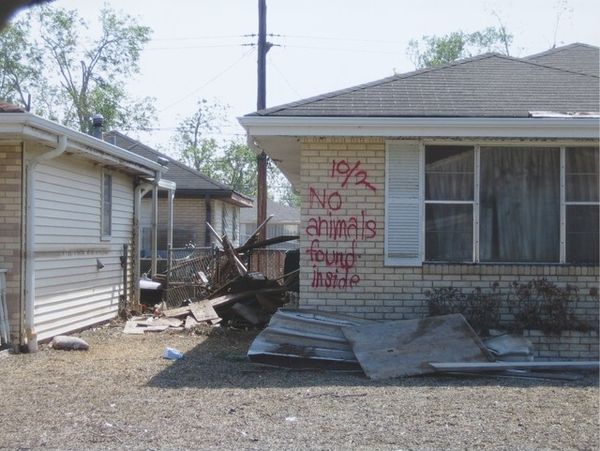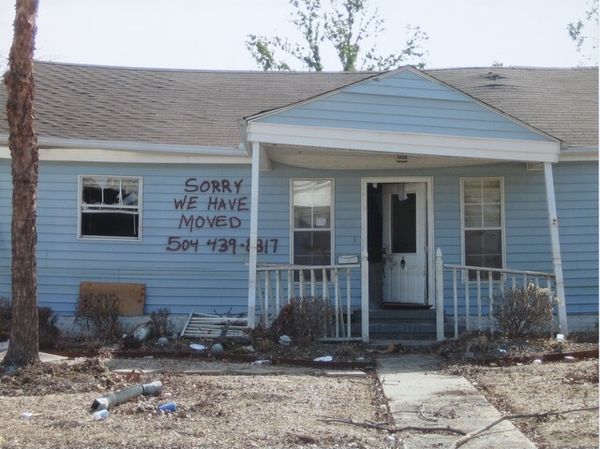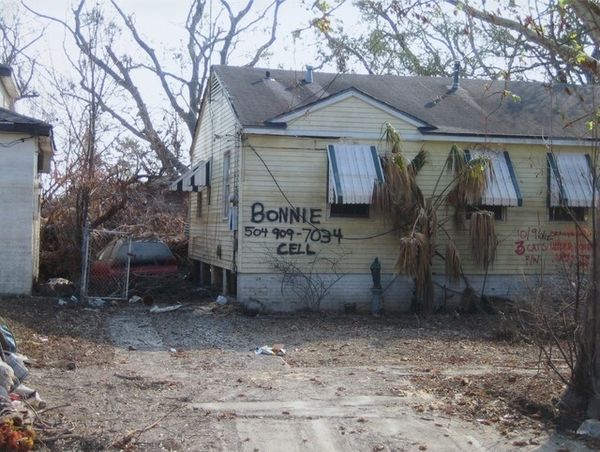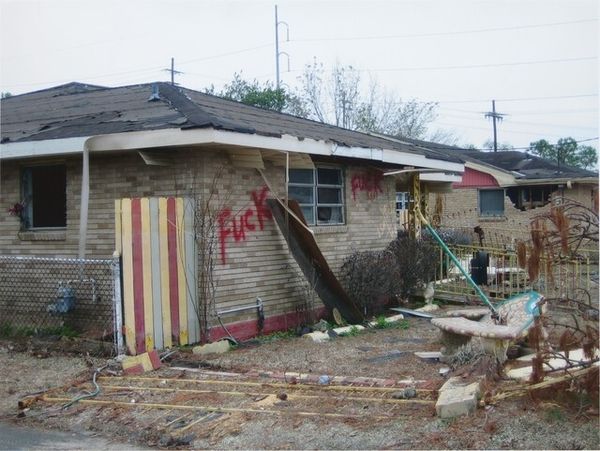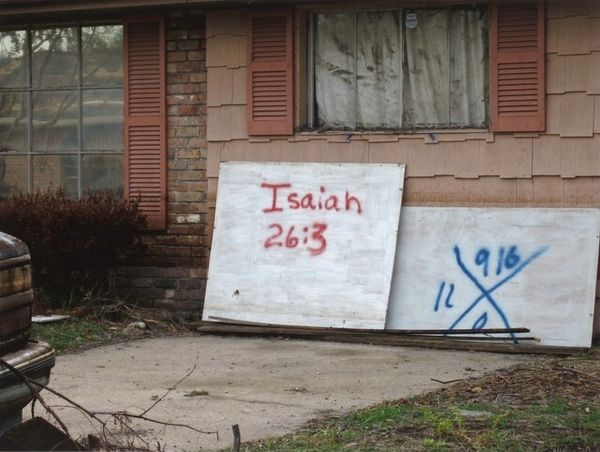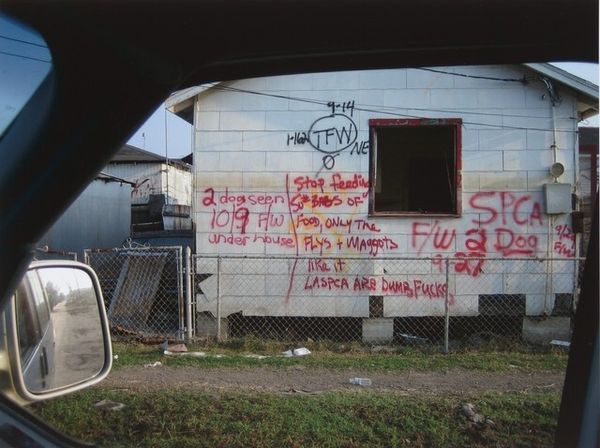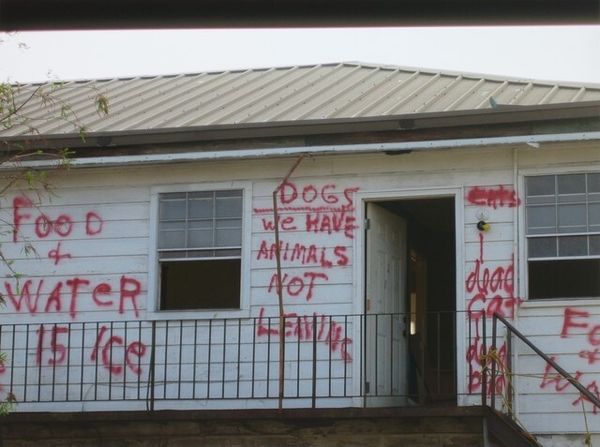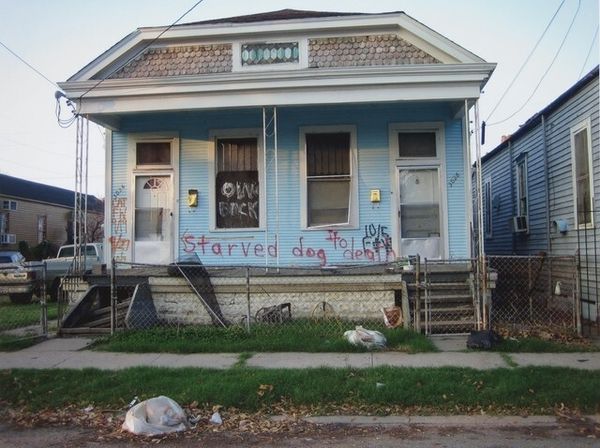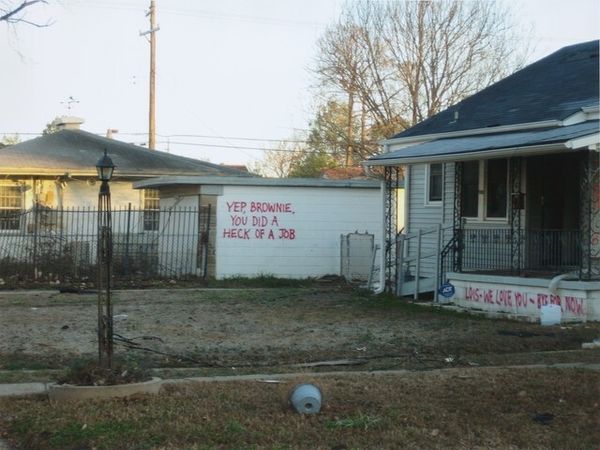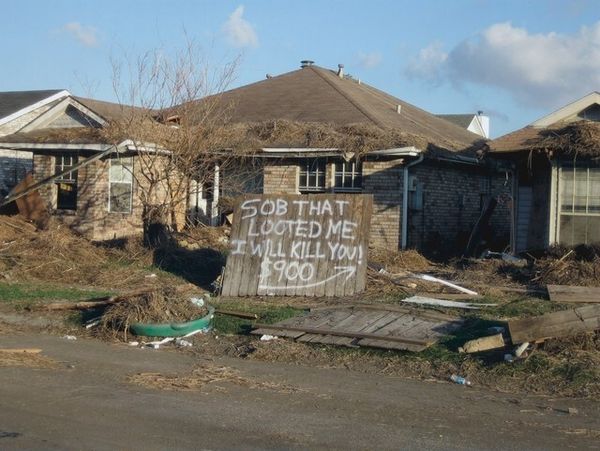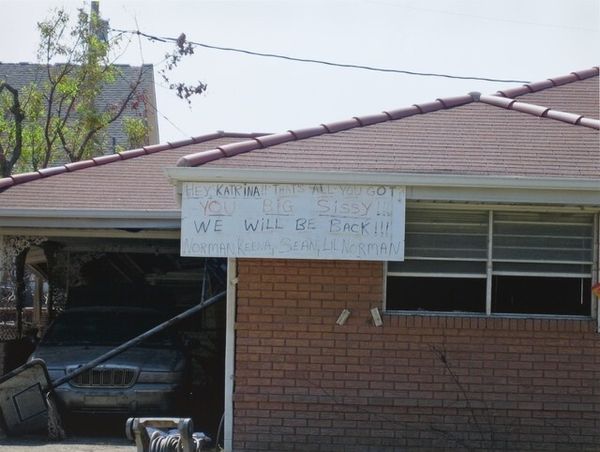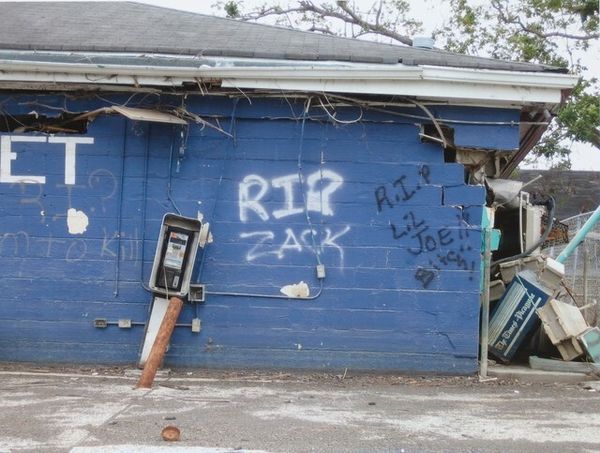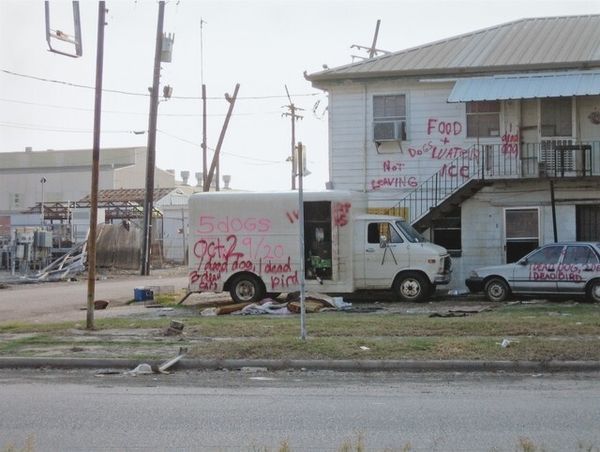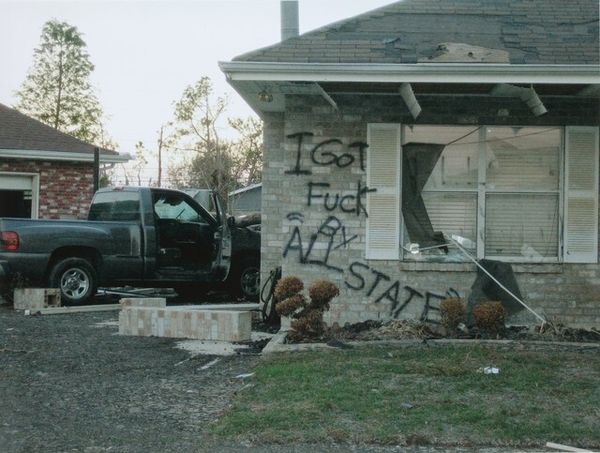![Untitled [New Orleans and the Gulf Coast, 2005] by Richard Misrach](/_next/image?url=https%3A%2F%2Fd2w8kbdekdi1gv.cloudfront.net%2FeyJidWNrZXQiOiAiYXJ0ZXJhLWltYWdlcy1idWNrZXQiLCAia2V5IjogImFydHdvcmtzL2RlODIyNDk1LWQ2NjQtNDQxNy1iNGE3LWEyODUyOGMyMzcwMy9kZTgyMjQ5NS1kNjY0LTQ0MTctYjRhNy1hMjg1MjhjMjM3MDNfZnVsbC5qcGciLCAiZWRpdHMiOiB7InJlc2l6ZSI6IHsid2lkdGgiOiAxOTIwLCAiaGVpZ2h0IjogMTkyMCwgImZpdCI6ICJpbnNpZGUifX19&w=1920&q=75)
Untitled [New Orleans and the Gulf Coast, 2005] Possibly 2005 - 2010
0:00
0:00
photography
#
public art
#
contemporary
#
street-art
#
graffiti art
#
street art
#
landscape
#
social-realism
#
photography
#
environmental-art
#
urban art
#
urban photography
Dimensions: image: 27.62 x 36.83 cm (10 7/8 x 14 1/2 in.) sheet: 28.89 x 38.1 cm (11 3/8 x 15 in.)
Copyright: National Gallery of Art: CC0 1.0
Editor: We’re looking at a photograph titled "Untitled [New Orleans and the Gulf Coast, 2005]" by Richard Misrach, likely taken between 2005 and 2010. It’s raw, visceral… a seemingly abandoned house marked with graffiti. What stands out to you? Curator: This photograph, beyond its immediate visual impact, functions as a historical document, speaking volumes about the socio-political landscape post-Hurricane Katrina. The graffiti – “St. Bernard Killed Circle, Can We Rebuild That?" – isn't just vandalism; it's a powerful indictment. How does Misrach, as an outsider, engage with such localized trauma through his lens? Editor: That’s interesting…I hadn’t considered Misrach’s position as an observer. I see the image as a straightforward reflection of the residents’ anger. Curator: But consider the context of museums and galleries displaying such images. Does this elevate the residents’ voices, giving them a platform, or does it risk exploiting their pain for artistic consumption? Is it possible for institutions to truly represent marginalized communities without perpetuating cycles of exploitation? Editor: That's a complex question. I guess displaying the image acknowledges what happened. But there's a line. What responsibility do art institutions have in shaping public memory about such events? Curator: Precisely. Are they neutral spaces or active participants in shaping narratives around disasters, race, and class? Consider the photograph's power to provoke dialogue – about accountability, resilience, and the role of art in bearing witness to historical injustices. Editor: I’m now considering how different viewers, especially those outside the New Orleans community, might perceive this image differently. This sheds new light on art's function in the social sphere. Curator: And it highlights how photography, particularly, becomes a contested site where social and political forces collide, challenging institutions to be more mindful in presenting complex histories.
Comments
No comments
Be the first to comment and join the conversation on the ultimate creative platform.
